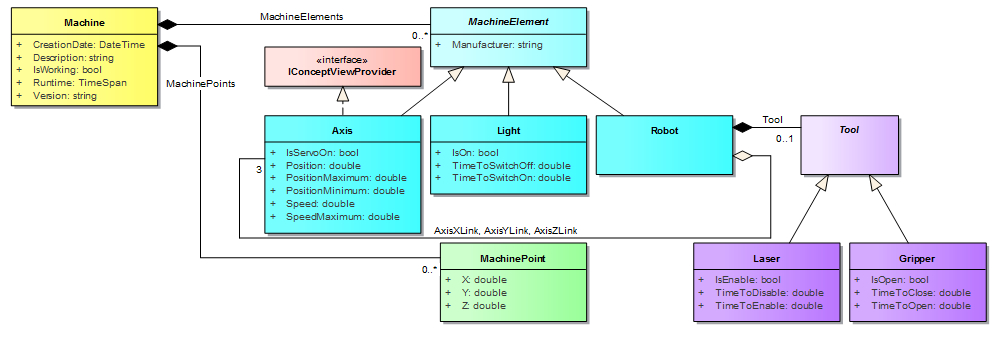

With our experience in industrial software, we noticed that many projects needed a modular architecture for configuration or recipes. To facilitate the work of the developer and reduce development time, Concept provides tools to create, edit and serialize a modular architecture.
The simple model below, illustrates perfectly a modular configuration requiring components like :

Concept provides all of these elements to easily create a hierarchical model like this one. Furthermore Concept also provides many other functionalities such as:
We usually create a root element which will contain the different models of the application (configuration, job, ...) such as the configuration shown above. Through this root element, we will have access to the different models of the application. To easily get to the different models, the root must be accessible from anywhere in the application, therefore it should implement the singleton design pattern. In this documentation we will call this root element FrameworkController.
 |
Usually the name of the root element is constructed as follows : xxxController where xxx can be the project name or any descriptive name. |
Usually the FrameworkController contains the load and unload methods to initialize the model at application startup and finalize it at the application shutdown. Load and Unload methods must be called at the right time by the bootstrapper.
 |
The bootstrapper has two virtual methods Load and Unload which can be overridden if necessary. See Initialization and the finalization of application services chapter in Starting a new application. |
public sealed class FrameworkController { private FrameworkController() { } public static FrameworkController Instance { get { return _instance; } } private static readonly FrameworkController _instance = new FrameworkController(); public void Load() { } public void Unload() { } }